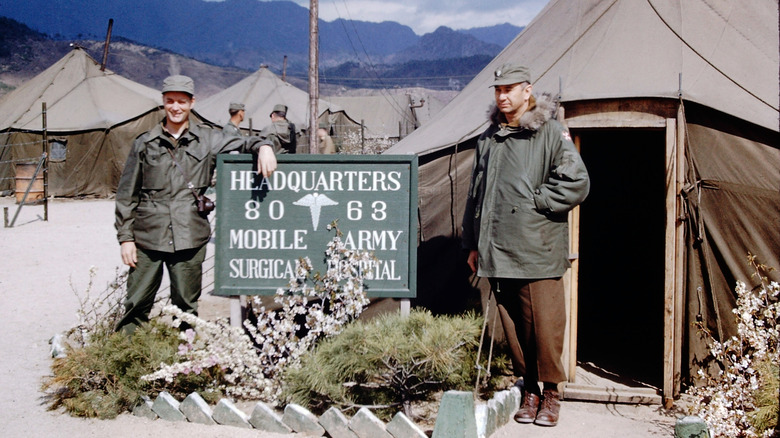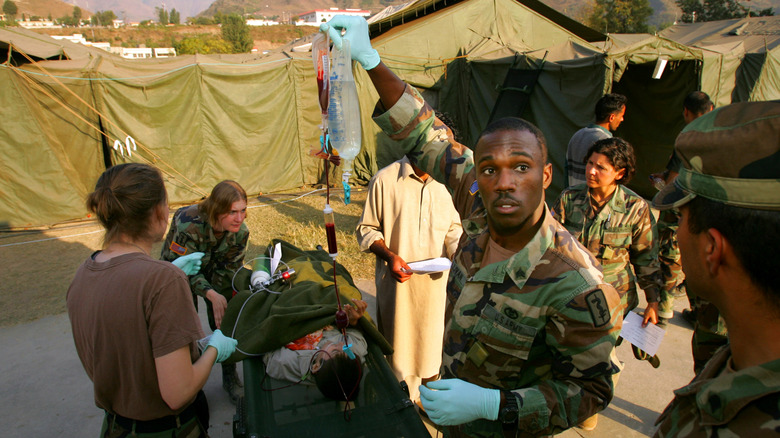What Is A MASH Unit And How Important Is It To The Military?
When you hear the term "MASH unit," your mind might jump to old TV shows or dramatic scenes from war movies. But MASH goes far beyond Hollywood, as these mobile medical teams played a critical role on the front lines, providing care when and where it was needed most.
The Mobile Army Surgical Hospital, or MASH, was introduced during World War II because of the need to get medical care to soldiers faster, often right where the action was happening. These traveling surgical hospitals were fully equipped and unlike military hospital ships, could move quickly to stay close to the front lines whenever needed. Thanks to the MASH unit's mobility, critically wounded soldiers didn't have to wait long to get treated, which helped save lives. These units were especially impactful during the Korean War, as the highly trained medical staff's battlefield efforts, combined with the U.S. Army's helicopter transports, increased survival rates and made MASH an integral part of military operations.
While the characters on the 1972-1983 TV show MASH weren't based on real people, many of the situations depicted were based on actual experiences. Two of the show's cast, Alan Alda and Jamie Farr, actually served in Korea with the U.S. Army prior to MASH's run, thus bringing a personal perspective to the series.
MASH units supported military efforts around the world
After the Korean War, MASH units didn't disappear, but they changed with the times. During the Vietnam War, MUST units, which stood for Medical Unit, Self-contained, Transportable, were bigger, more advanced mobile setups that could handle the kinds of injuries doctors were regularly seeing, like serious burns from napalm attacks. MASH units just weren't built for that kind of care, and burn victims had a much lower survival rate in traditional MASH facilities.
But MASH wasn't gone for good, as it played a crucial role in U.S. military operations during the Gulf War. A MASH unit became the first fully functional U.S. Army hospital in Saudi Arabia in 1990 and stayed close to the front lines in support of the 24th Infantry Division. In 1991, the 159th MASH from the Louisiana National Guard moved into Iraq during Desert Storm, backing the 3rd Armored Division. Other MASH units stayed stateside, ready to go if needed, showing how important these mobile hospitals still were to the military.
By 2006, the MASH era officially came to an end with the 212th Combat Support Hospital. CSH could do everything a MASH could and more, thanks to better equipment, a larger medical team, and expanded capabilities. CSH also had more beds, included specialists, and could hold patients for a few days right on the battlefield. While most people still think of MASH when they hear "mobile hospital," today's military medical teams are more advanced than ever.

